Why is the lake level down?
November 5, 2025
If you have been to Clear Lake in the last couple months, you likely noticed the unusually low water level within the lake. This low water level has created temporary shoreline “beaches” in certain areas and caused difficulties in boating lake-wide. We’ve answered some commonly asked questions using real data from our Watershed Diagnostic Study and utilizing precipitation tools from the National Weather Service and National Oceanic and Atmospheric Administration.
Key Highlights:
- Steuben County has experienced drought conditions since September 2025.
- In addition to drought, evaporation of lake water on warm days can be a large cause of water loss.
- The average normal water level of Clear Lake is 1037.38 and the permanent dam at Round Lake helps to maintain this level for shoreline property protection.
- Expect normal water levels to return by spring 2026 from snowmelt and spring rain.
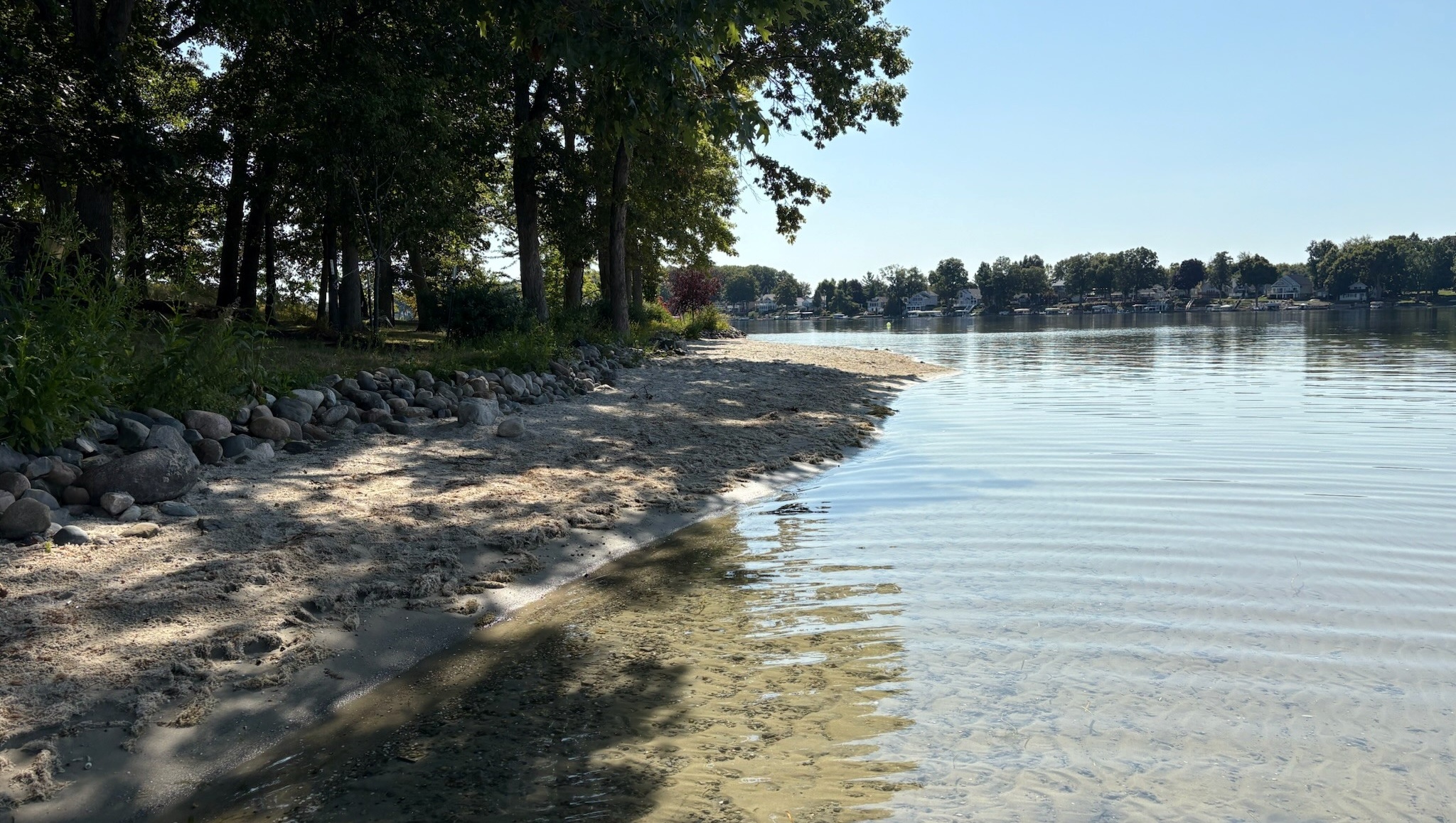
Q: What is causing the low water level?
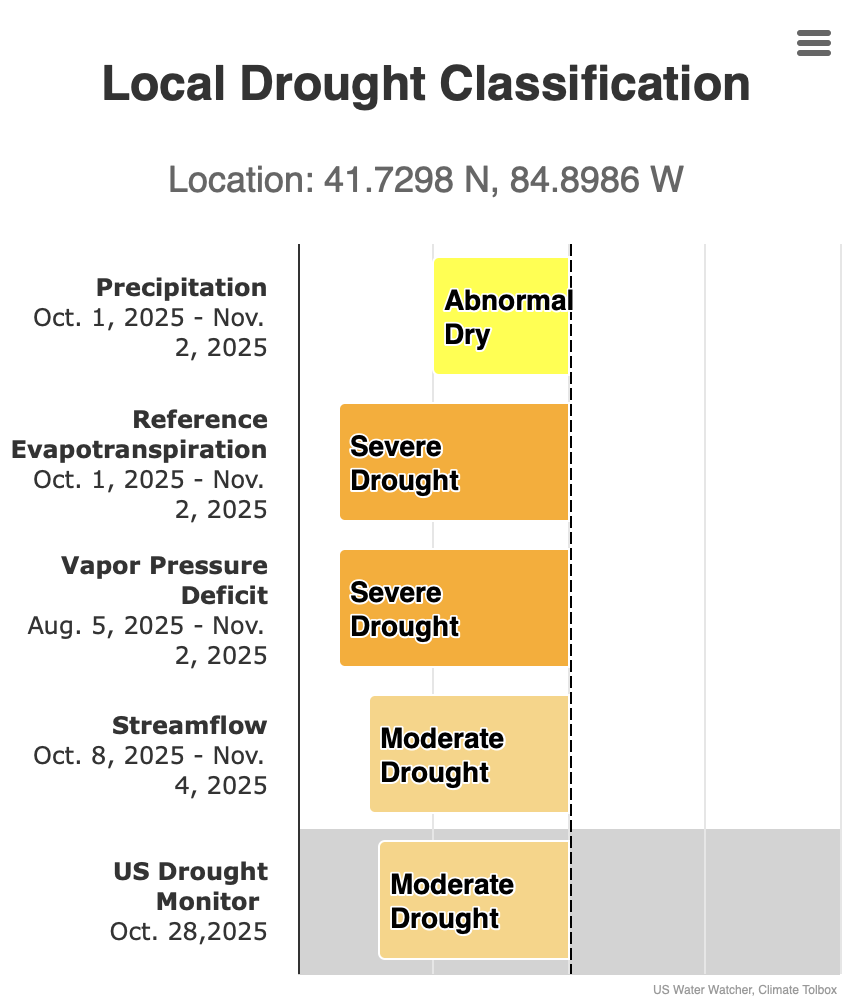
A: A combination of drought conditions and evaporation have led to the low water level. The National Integrated Drought Information Service monitors national drought conditions. Steuben County has experienced varying drought conditions since September 2024. With less snowfall this past winter and less rain throughout the summer, our in-flowing ditches have brought in less water. Additionally, high temperatures in August and September caused more evaporation of the lake’s water this year. The U.S. Drought Monitor shows varying drought conditions in 2025, with abnormally dry and moderate drought conditions from August through October.
Photos from Climate Toolbox.
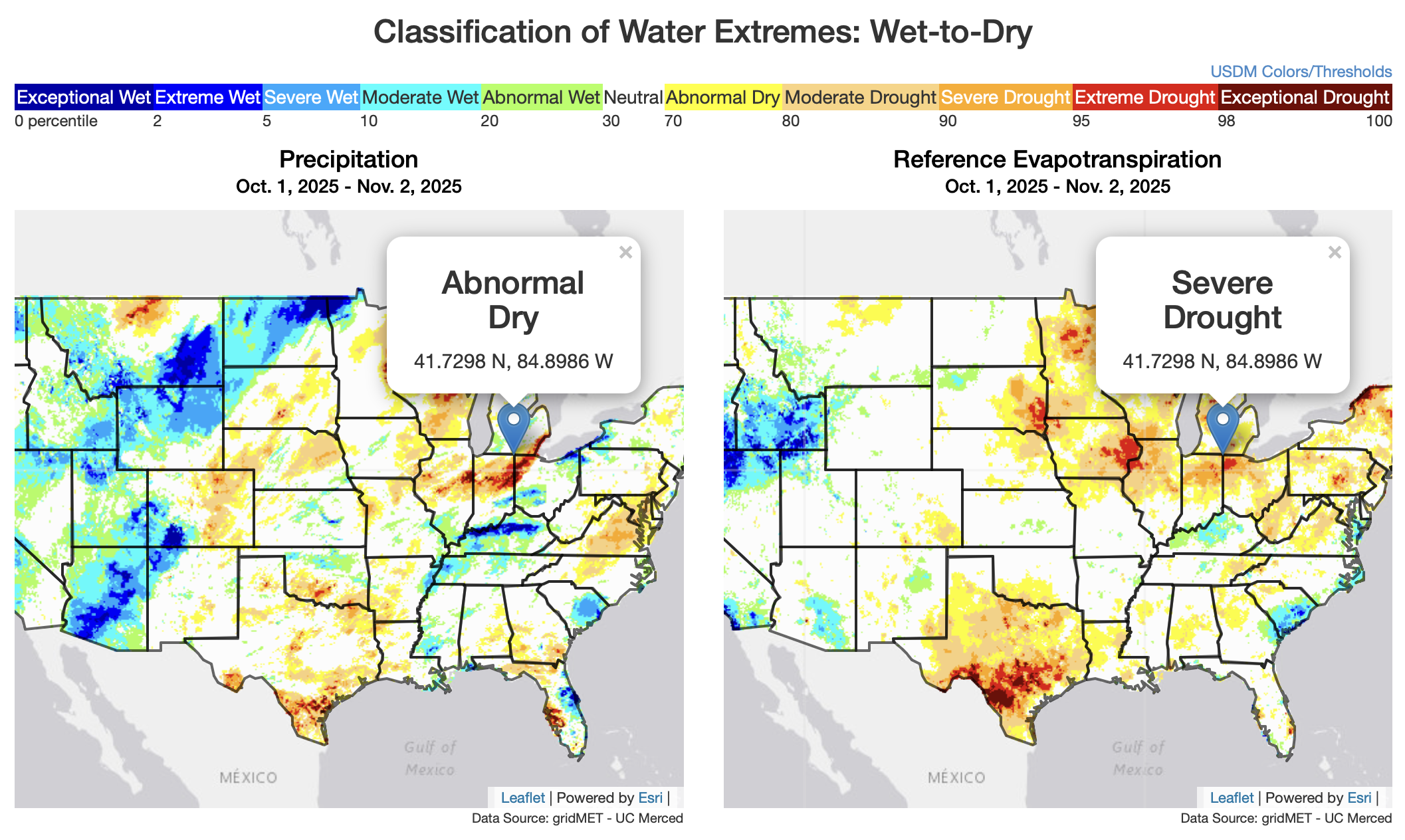
Q: Does the dam at Round Lake change the water level?
A: Aside from evaporation and lake-side residential use, the only exit point for Clear Lake’s surface water is through Round Lake’s dam. The dam is a concrete structure set at the “average normal water level” of 1037.38 feet above mean sea level.
The purpose of the dam is to hold water at the average normal water level. If the water level of the lake is higher than the average normal water level, water flows over and out of the dam. If the water level of the lake is at legal level or lower, the dam holds water in. Note: While lake-side residential use does contribute to water withdrawal, it has not significantly changed over the past few years.
In 2025, the highest lake level in April was around 7 inches above the dam. By October, it was nearly 8 inches below the dam. The water level has dropped at least 15 inches within the year. While this drop is larger than we have seen in the past few years, it follows the seasonal trend of low water levels in the fall.


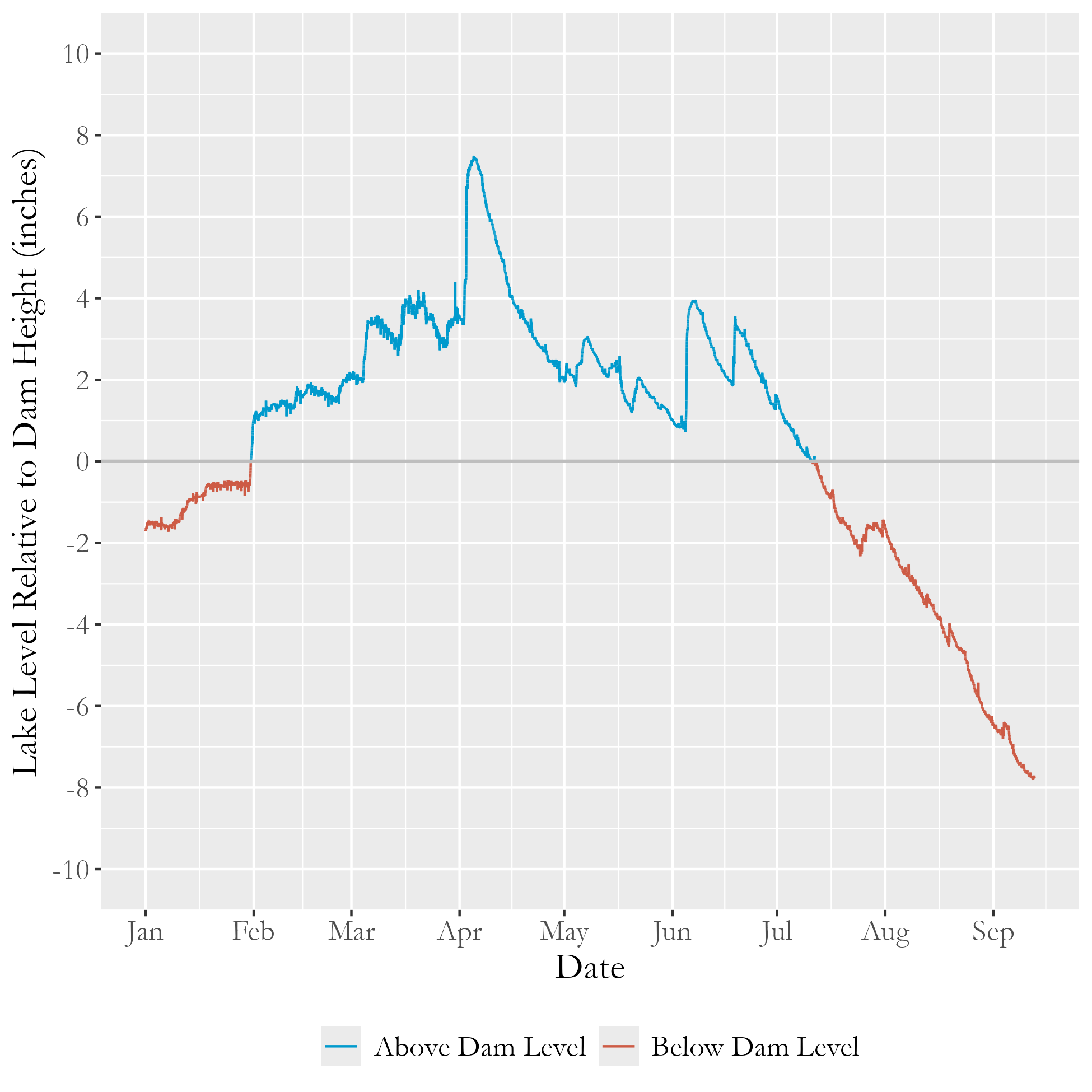
Figure 2: This graph shows the lake level above the dam (blue) and below the dam (red) from January 1, 2025 to September 12, 2025.
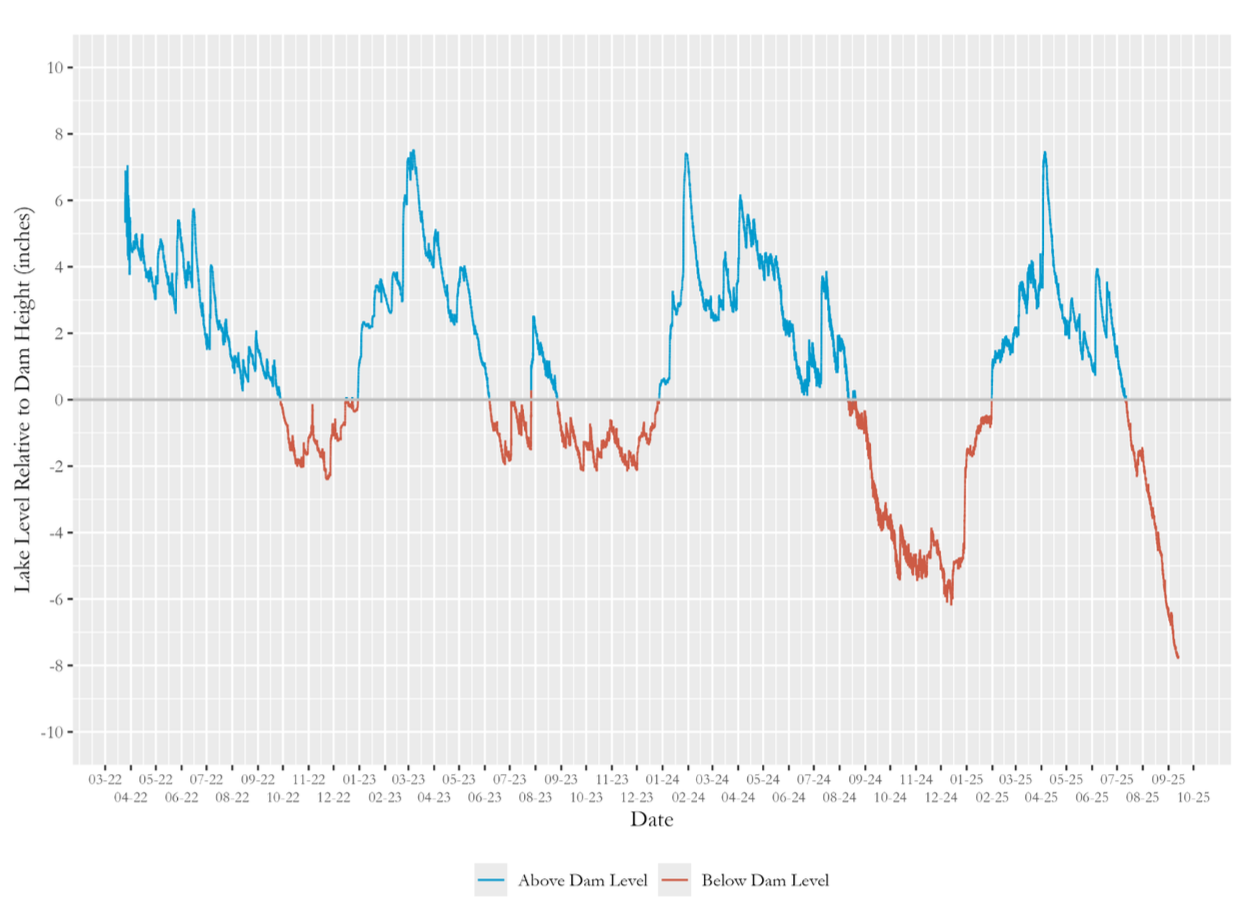
Figure 3: This graph shows the lake level above the dam (blue) and below the dam (red) from March 22, 2022 to September 12, 2025.
Q: What is an average normal water level and how was it established?
A: Indiana’s 1947 Lake Preservation Act authorized the Indiana Department of Natural Resources to establish “average normal water level”, sometimes referred to as “legal lake level”. At that time, water level research had already been started to see how high and low the water level of Indiana lakes would vary throughout weather and seasonal changes. In 1950, Clear and Round Lakes' average normal water level was established at 1037.38 feet above mean sea level. The permanent dam at Round Lake is designed to maintain this water level. This helps to protect shorelines and lake-side properties from flooding.

The U.S. Geological Survey conducted research to determine the average normal water level. The two unnamed ditches have since been named Harry Teeters and Cyrus Browse. Full resource below.
Q: How does low water level affect algae and aquatic plant growth?
A: We can make an educated prediction for this question, but the best answer is to continue observing and monitoring the algae and plant growth within the lake. As the lake level falls, sunlight might reach further into the lake and allow plants to grow at a deeper depth than before. Algae might grow as nutrients become more concentrated in the water. However, many factors can affect this, such as water temperature, boating activity, and water clarity.
Q: When will the lake level return to normal?
A: The water level should return to normal by spring 2026. Winter snow will fall on the frozen lake and accumulate on the land and ditches that flow into the lake. As snow melts and spring rains arrive, the lake will receive plenty of water to refresh. We will continue closely monitoring the lake level, precipitation, and water quality throughout the coming year.
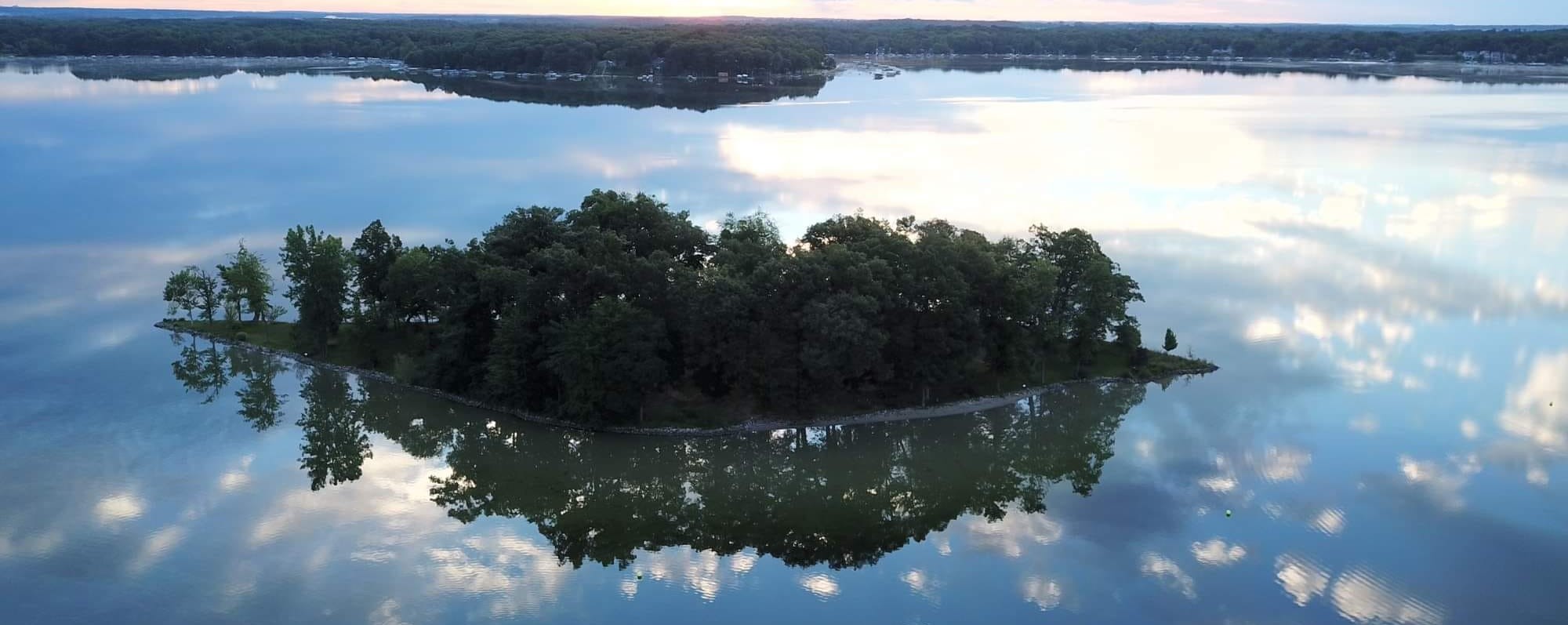
Additional Resources
Annual Maximum and Minimum Lake Levels for Indiana 1942-85 U.S. Geological Survey [Clear Lake Data on Page 48]
U.S. Drought Monitor for Steuben County
Additional Watershed Diagnostic Study Data for Precipitation and Round Lake Dam from Ecosystems Connections Institute and Clear Lake Township Land Conservancy
University of California Merced Climate Toolbox - Hegewisch, K.C., Abatzoglou, J.T., McEvoy, D., Chedwiggen, O., Nijssen, B., and Huntington, J.L..' Historical Water Watcher' web tool. Climate Toolbox accessed on 4 Nov. 2025.
